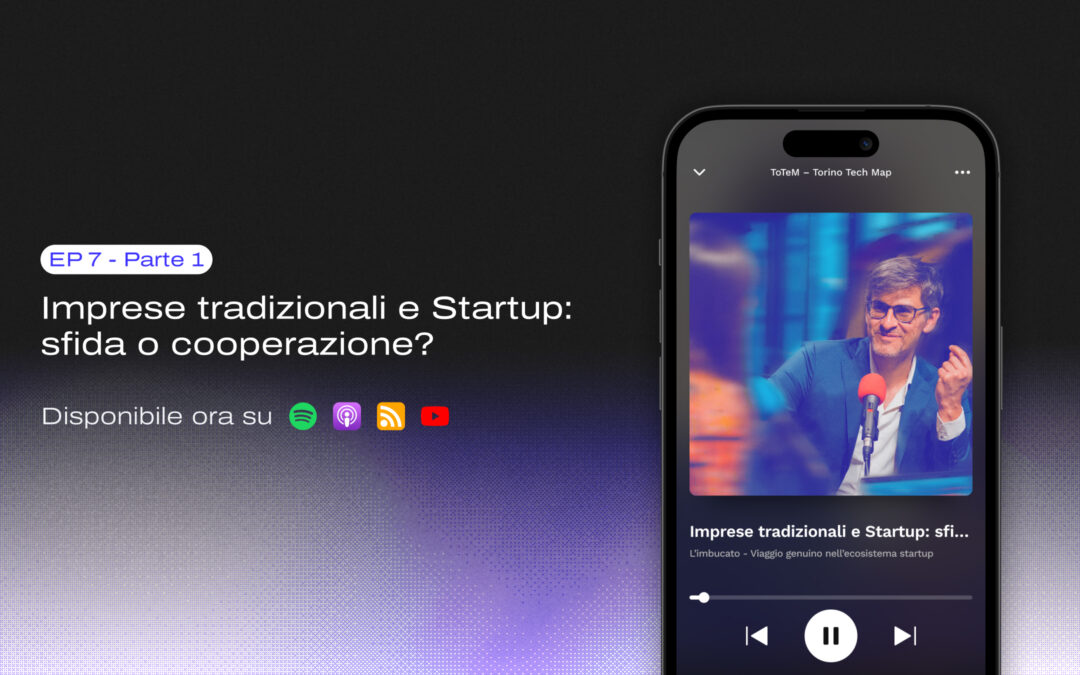Content extracted and reworked from the webinar of Fabio Sferruzzi (founder Echo Digital Studio) during the event Italian Tech Weekend Festival 2020.
In the world of startups, being able to present your idea through an effective pitch is essential to gain the trust of investors, the support of partners and to find new team members.
Selling an idea does not necessarily have an " exploitation" purpose: selling an idea means selling yourself, presenting your project to another person and convincing them that it is worth investing time, contacts, advice, money. Many people suggest to start by trying to capture the attention of the interlocutor in less than two minutes through a very quick presentation that in the startupper jargon has taken the name of "Elevator Pitch" (i.e. a presentation able to convince another person during a trip together in the elevator).
Don't worry if you've never been on stage before, you don't have to be born for the show. Presenting to one person or 500 people is the same thing, the rules are exactly the same, but being in front of an audience triggers something that makes us feel a different pressure, a higher judgment, a different emotional impact. But with our suggestions, a little bit of technique and a lot of training you will win the hearts of your audience.
How to present an idea?
- Part 1. Storytelling & framing: how to tell your story
- Part 2. Body language & attitude: body language and attitude
- Part 3. Slides & practical tips: how to organize your presentation
Storytelling & framing: how to tell your story
Get off to a great start
Start by creating the WOW effect, start with something unusual and different that will positively impress the audience. The introduction of a speech is like the cover of a book, the first thing a reader sees when he takes it in his hands.
Create a connection with the audience
Establishing an empathic connection is essential to communicate effectively and to ensure that your audience remembers you. Telling a personal story, an episode of your life or something about yourself is always a good way to create a personal connection between the speaker and the listener. Involve your audience by asking questions and creating interactions, don't make your presentation a one-way experience or a personal show. Asking small questions, with quick and easy answers, at the beginning can be very useful to capture the audience's attention and get them in tune with your speech right away.
Be positive, courageous, honest
Negativity, complaints, criticism, frustrations do not help to convince other people to collaborate with you. People want to be involved in something positive and energizing. Moreover, do not avoid facing uncomfortable topics (the budget, deadlines, the competitive arena, the threat of possible competitors) but face them with rationality and transparency: you will show that you have the situation under control and that you are aware of the challenge you are facing. Finally, do not be afraid of what you do not yet have an answer for, but approach it with sincerity, without making excuses or improvising imaginative answers: honesty makes people less suspicious and more willing to support what you are doing.
Repetita iuvant
During a speech the attention span registers peaks and drops in a physiological way. Repeating some parts will help the audience to identify the key concepts of the speech and especially to remember them when the presentation is finished.
Use silence
Some say that there is no more deafening noise than silence, others think that a tactically positioned pause in a speech has enormous power in giving value to certain moments and statements. Even more, a few seconds of silence can be very useful to bring the audience's attention back to high levels, especially in long speeches...and above all it will allow you to take a breath!
Explain your "why"
Try to make as explicit as possible the purpose of your presentation and what your real intent is: communicating it clearly at the beginning can be functional to make sure that the audience fully understands the center of your speech. In order to build a linear and coherent discourse, it is essential to have your goal in mind before you even begin to develop the structure of your presentation.
Be careful how you use words!
Avoid jokes unless you are certain that they are positively received by the people in front of you and pay close attention to the context you are in. Use humor only if you are sure of how you are using it: in this case it could be a way of demonstrating confidence in the subject being discussed. Another matter regarding metaphors which are an excellent tool to make concepts understood and remembered that, otherwise, could be too complex or unfamiliar to your audience: you prefer commonly used metaphors, belonging to a well-defined, immediate easy to understand. Their use will give originality to you and your speech and will help you to be more remembered by your audience.
Use numbers carefully
Don't try to impress the audience with sensational numbers, prefer smaller and more specific figures that are easier to see immediately and that make the size of the impact you want to have with your idea better understood. For example, say "Imagine using two devices per household" instead of "We want to cover this area with 40 million devices over the next 5 years".
Introduce your team
To give more strength and credibility to the idea you are presenting highlight the previous projects and successes of the team members: the main parameter of choice for an investor is the team since it is essential to be convinced by the people you are giving your money to. Be careful not to become too verbose and don't lose yourself in providing details that are not strictly relevant to support your story.
Make room for Q&A
Be prepared to receive even questions that may be intentionally aimed at putting you in distress or trying to reveal a weakness in your project. Also, if no one has any questions for you, prepare some of them by presenting them as if they were the most common questions you have had to answer before. In this way, you can take advantage of this strategy to explore some of the issues that there was no way to address in your presentation and, in doing so, you may encourage the audience to come forward with further requests.










